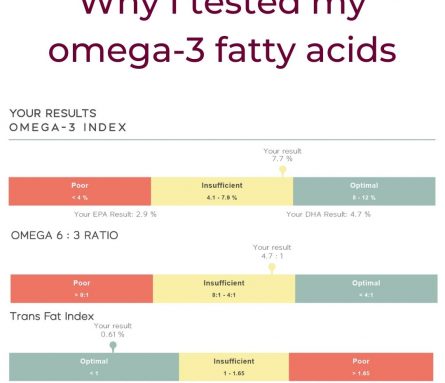I just got the results back from my omega-3 fatty acids test and was surprised to learn that my level is insufficient – even though it's at the upper end of the range.
So why did I test and what does it all mean?
Omega-3 fatty acids are a type of polyunsaturated fat that our bodies cannot produce on their own, so we have to obtain them through our diet. The best food sources are oily fish such as salmon, mackerel, anchovies, sardines and herrings – which I eat regularly – as well as chia seeds, flaxseeds and walnuts.
Omega-3s are vital for hormonal balance especially at menopause and can be a game-changer for brain fog, mental clarity and mood swings. They’re also crucial for heart, brain and bone health.
Most of us are not eating enough and it is thought that our brains are shrinking and our IQ de-creasing as a result.
Signs that you’re low in omega-3 fatty acids include:
😔 Dry skin
😔 Brittle hair and nails
😔 Joint pain and stiffness
😔 Fatigue and poor concentration
😔 Low mood
😔 Heart health issues
😔 Vision problems
😔 Weak immune system
The ratio of omega-3 to omega-6 fatty acids is also important. Most of us eat a lot of foods containing omega-6s and ideally the ratio should be as close to 1:1 as possible for optimal health and minimal inflammation.
The only measure that came out optimal was my level of transfats – hydrogenated fats that are toxic in the body and found in processed and manufactured foods such as pastries, cakes, biscuits, chocolate, margarine and fried foods.
So my plan of action is to be more consistent with my 2-3 portions of oily fish each week and to increase my supplement dosage.
If you're interested in testing get in touch, it's easy to do via a finger-prick blood spot and costs ca. £50.

